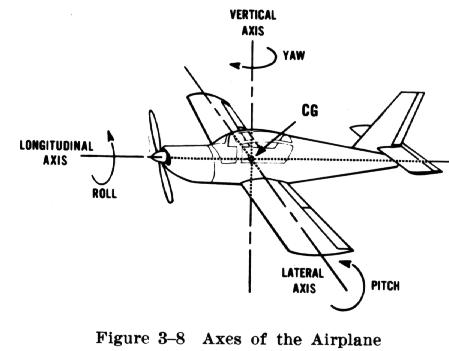How Planes Control their
Direction

Airplanes have three axis of rotation.
They are the longitudinal, vertical, and lateral
axis. The longitudinal axis is what allows an
airplane to turn. The lateral axis is what
allows the airplane to pitch up and downwards so
that the airplane can gain or loose altitude.
The vertical axis is what allows the plane to be
looking in the same direction in which it is
actually moving/turning in. The control surfaces
on the wings and empennage allow the motion on
these axis to be controlled. The ailerons
control the roll on the longitudinal axis by
allowing one wing to have more lift than
another. The elevator on the horizontal
stabilizer "varies the amount of force generated
by the tail surface and is used to generate and
control the pitching motion of the aircraft"
according to NASA. The rudder on the vertical
stabilizer which is also part of the empennage
allows the yaw movement on the vertical axis. At
the point where all three axis meet is the
center of gravity of the plane. It is very
crucial that the center of gravity is in the
correct spot in the plane (noted by
manufacturer) because if it isn't, the plane
will not fly in a stable matter making the
flight unsafe, or it just won't fly at all.
